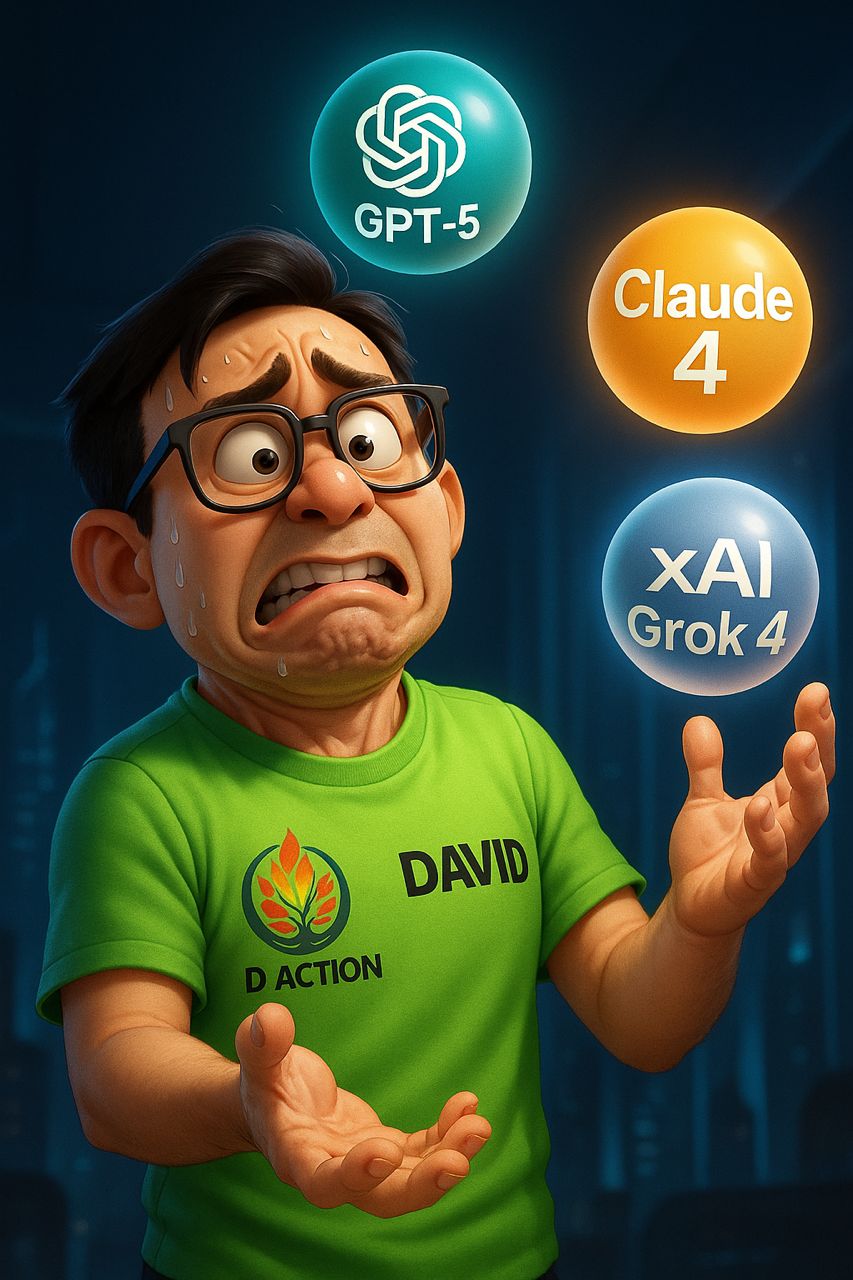
🚀 AI Model Showdown: GPT-5 vs. Grok 4 vs. Claude Sonnet 4 – Who Wins?
The past two weeks have been explosive in the AI world! OpenAI rushed GPT-5 to market (amid mixed reviews), while Musk made waves by announcing free access to xAI’s Grok – 4. Both companies claim their models are the smartest in the world—so I put them to the test!
I also threw Claude Sonnet 4 (not even Anthropic’s latest Opus 4.1) into the mix for a triple-threat battle. Here’s how they performed in three programming challenges:
🎮 Round 1: Game Development (Space Shooter)
All three models successfully built a playable game, but GPT-5’s version stood out—smoother controls, better visuals, and overall polish. Claude Sonnet came in second, while Grok’s was the most basic. Winner: GPT-5! Prompt and game link as below. Try and test it out!
- Make a 2D browser game where you control a spaceship with the arrow keys and shoot lasers with the spacebar. Asteroids should spawn randomly and drift across the screen. If a laser hits an asteroid, it explodes and your score goes up. If the spaceship hits an asteroid, the game ends and shows the final score.
🔗 GPT – 5
🔗 Grok 4
🧊 Round 2: 3D Modeling (Rubik’s Cube Simulation)
Shock result! GPT-5 and Grok failed—no cube rendered, just placeholder code. Meanwhile, Claude Sonnet delivered a flawless, interactive 3D cube that rotated with my mouse. Winner: Claude Sonnet!
- In Playground, use Three.js to create a complete HTML/JavaScript program that renders a fully interactive Rubik’s Cube C-axis simulation. The user should be able to dynamically specify the size of the cube (up to 20x20x20), and the program should construct the cube using standard color-coded surfaces. The simulation must include camera controls for rotating the view, and allow basic user interaction through the mouse or UI buttons to rotate cube layers. In addition, implement a “Solve” button to visually demonstrate the step-by-step cube-solving process using a simplified algorithm in an animated format.
📱 Round 3: App Development (Smart To-Do List)
Grok’s “app” was basically an Excel sheet—eliminated. GPT-5 and Claude Sonnet both worked, but Sonnet’s design felt more polished, like a real app. Winner: Claude Sonnet again!
- Make a web-based to-do app that lets me add things to my list, view items as a list or in a calendar, and lets me add information like a time it needs to be completed (not just a date). Also, add a random quote generator that shows a different random inspirational quote each time I press a button.
🔗 GPT – 5
🔗 Grok 4
🏆 Final Score: Claude Sonnet 4 (2 Wins) > GPT-5 (1) > Grok 4 (0)
The underdog won! A non-latest model outperformed two flagship AIs.
🔥 Why This Matters
Anthropic (Claude’s maker), founded <5 years ago, is now valued at $150B—half of OpenAI’s $300B. The AI race is heating up, and falling behind isn’t an option.
The question is: Are you keeping up?
💡 Which AI do you prefer? Try the demos & share your thoughts!
AI isn’t coming—it’s already here. In Malaysia’s digital transformation race, early adopters will lead. Remember: AI won’t replace people, but those who use AI will outperform those who don’t.
What’s your first step? Share in the comments!

